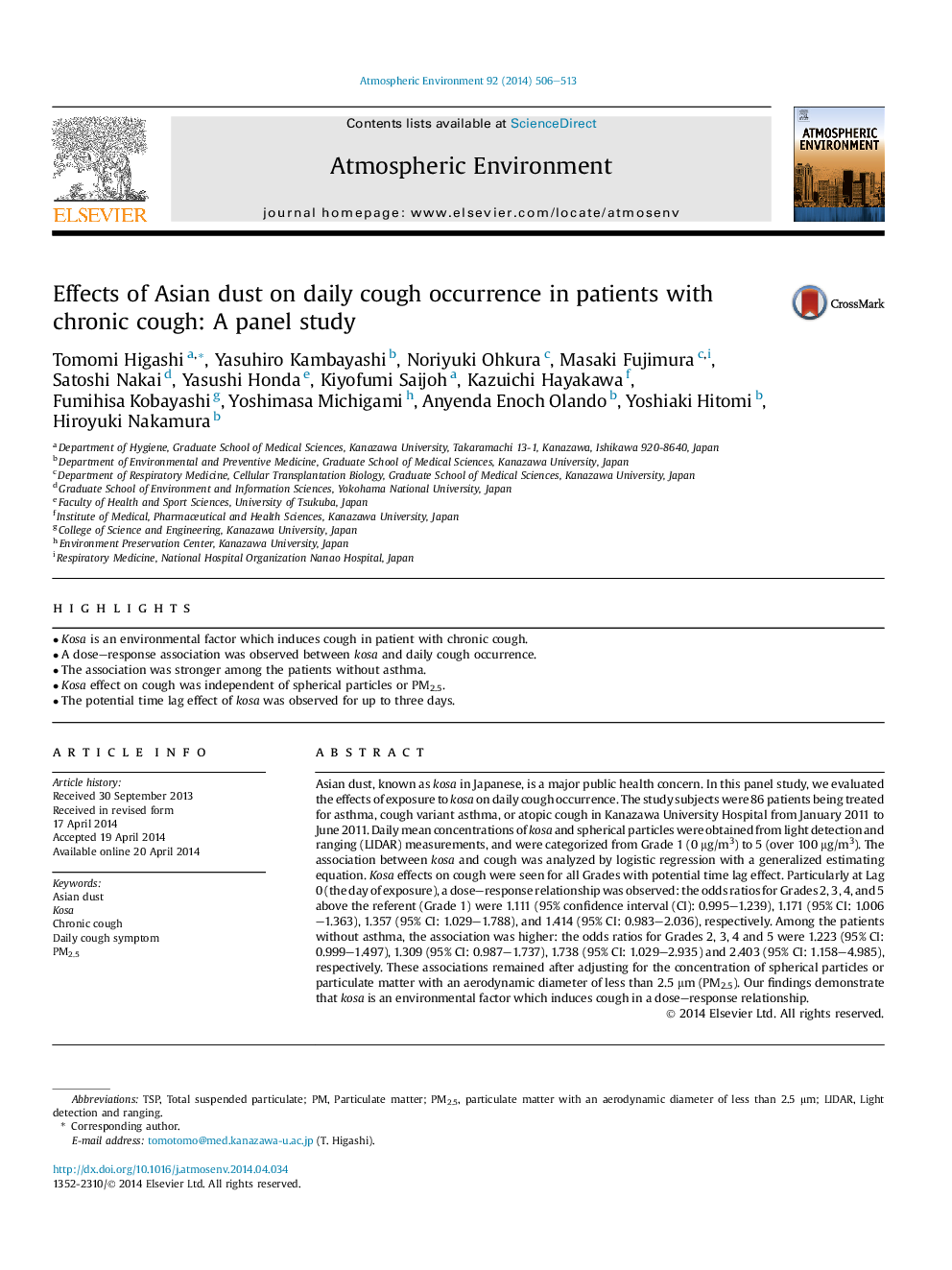| Article ID | Journal | Published Year | Pages | File Type |
|---|---|---|---|---|
| 6339421 | Atmospheric Environment | 2014 | 8 Pages |
Abstract
Asian dust, known as kosa in Japanese, is a major public health concern. In this panel study, we evaluated the effects of exposure to kosa on daily cough occurrence. The study subjects were 86 patients being treated for asthma, cough variant asthma, or atopic cough in Kanazawa University Hospital from January 2011 to June 2011. Daily mean concentrations of kosa and spherical particles were obtained from light detection and ranging (LIDAR) measurements, and were categorized from Grade 1 (0 μg/m3) to 5 (over 100 μg/m3). The association between kosa and cough was analyzed by logistic regression with a generalized estimating equation. Kosa effects on cough were seen for all Grades with potential time lag effect. Particularly at Lag 0 (the day of exposure), a dose-response relationship was observed: the odds ratios for Grades 2, 3, 4, and 5 above the referent (Grade 1) were 1.111 (95% confidence interval (CI): 0.995-1.239), 1.171 (95% CI: 1.006-1.363), 1.357 (95% CI: 1.029-1.788), and 1.414 (95% CI: 0.983-2.036), respectively. Among the patients without asthma, the association was higher: the odds ratios for Grades 2, 3, 4 and 5 were 1.223 (95% CI: 0.999-1.497), 1.309 (95% CI: 0.987-1.737), 1.738 (95% CI: 1.029-2.935) and 2.403 (95% CI: 1.158-4.985), respectively. These associations remained after adjusting for the concentration of spherical particles or particulate matter with an aerodynamic diameter of less than 2.5 μm (PM2.5). Our findings demonstrate that kosa is an environmental factor which induces cough in a dose-response relationship.
Keywords
Related Topics
Physical Sciences and Engineering
Earth and Planetary Sciences
Atmospheric Science
Authors
Tomomi Higashi, Yasuhiro Kambayashi, Noriyuki Ohkura, Masaki Fujimura, Satoshi Nakai, Yasushi Honda, Kiyofumi Saijoh, Kazuichi Hayakawa, Fumihisa Kobayashi, Yoshimasa Michigami, Anyenda Enoch Olando, Yoshiaki Hitomi, Hiroyuki Nakamura,
